

|
Our visit to Sequoia National Park and Kings Canyon National Park was another trip in the same summer. To us, it continued our adventure, so it is included here.
|
|
Sequoia National Park and Kings Canyon National Park reside in a contiguous region of the southern Sierra Nevada mountains. There are 75 giant sequoia groves in the two parks containing more than 15,800 trees. The Sierra Nevada range is home to Yosemite National Park up north and is inextricably associated with John Muir (1838-1914), a great Scottish-American naturalist. We visited Yosemite in the summer of 2015.
Your Guide to the National Parks by Michael J. Oswald Yosemite: The Complete Guide by James Kaiser |
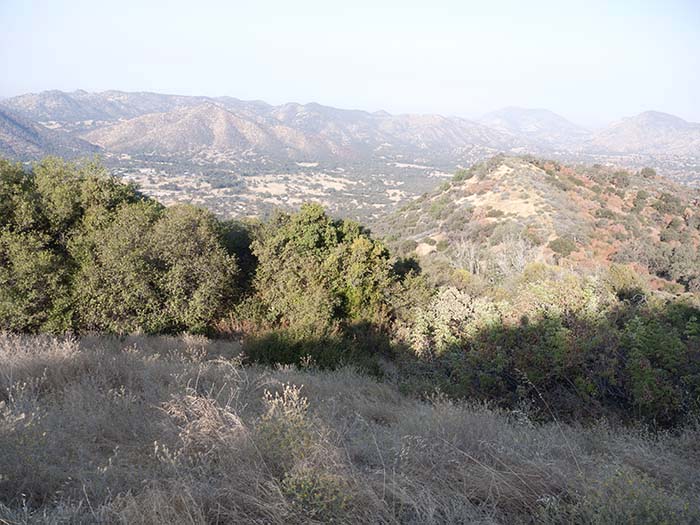
Entering Sequoia National Park
August 27, 2016: 7:08 AM |
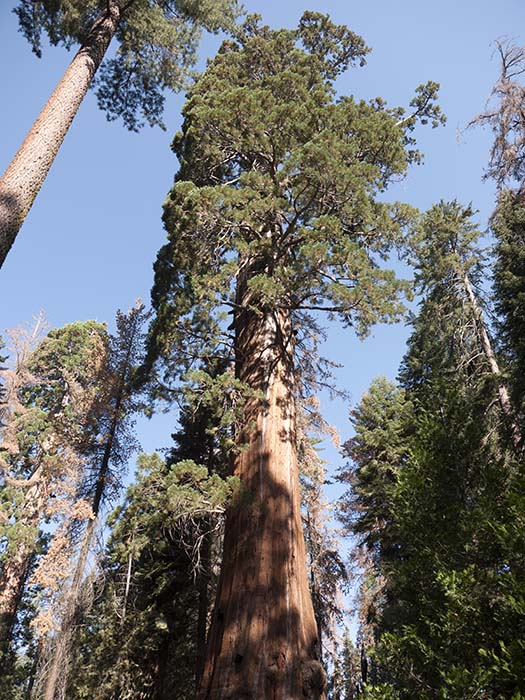
Giant sequoias (Sequoiadendron giganteum)
August 27, 2016: 8:36 AM |
|
By volume, giant sequoias are the largest trees on Earth. They can reach a height of 95 m, a trunk diameter of 8.25 m, and an age of 3,266 years. One of the largest trees has been recently estimated to bear 2.8 billion leaves. However, giant sequoias are not the tallest trees (this honor goes to coast redwoods (Sequoia sempervirens) that can reach a height of 115 m) and not the oldest ones (this honor goes to great basin bristlecone pines (Pinus longaeva) that can live for over 5,000 years; see Bryce Canyon National Park). All three species are native to California and are protected.
Trees of Western North America by Richard Spellenberg, Christopher J. Earle, and Gil Nelson |
|
This can get confusing! The giant sequoia (Sequoia sempervirens) is of course a sequoia. Strictly botanically, however, it is not a Sequoia. It is a Sequoiadendron, "a sequoia-like tree." In contrast, the coast redwood is a Sequoia – Sequoia sempervirens, to be exact. Both species are in the Cypress (Cupressaceae) family.
|

A cone of the giant sequoia
August 27, 2016: 9:03 AM |
|
The sequoia cone is unexpectedly small. Enormous cones (25-50 cm long) are often found near sequoia trees, but they come from sugar pines (Pinus lambertiana), large 5-needle conifers.
Trees of Western North America by Richard Spellenberg, Christopher J. Earle, and Gil Nelson |
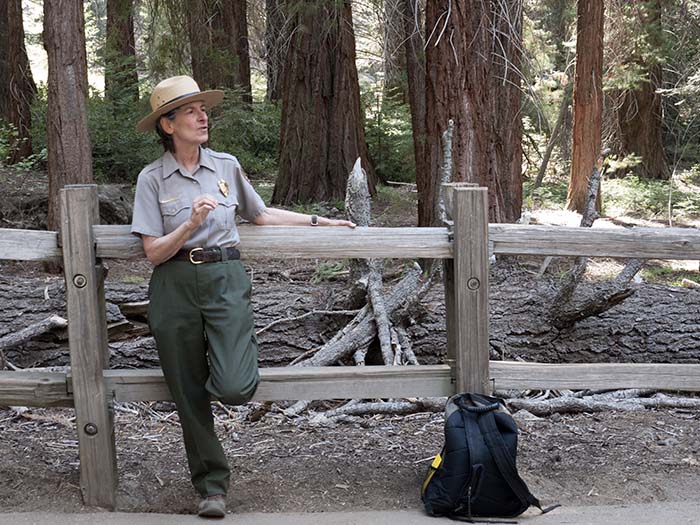
In the morning, we were fortunate to be led by a wonderful park ranger – a sharp, logical, and elegant mind. A number of her points are reflected in this page.
August 27, 2016: 9:07 AM |

Giant sequoias (Sequoiadendron giganteum)
August 27, 2016: 9:10 AM |
|
The wood of the giant sequoia is decay-resistant (and the bark is unusually fire-resistant). However, sequoia wood is also fibrous and brittle, which makes it unsuitable for construction (this may not have been a bad thing, historically speaking). It has been used mainly for shingles, fence posts, and matchsticks.
Wikipedia |
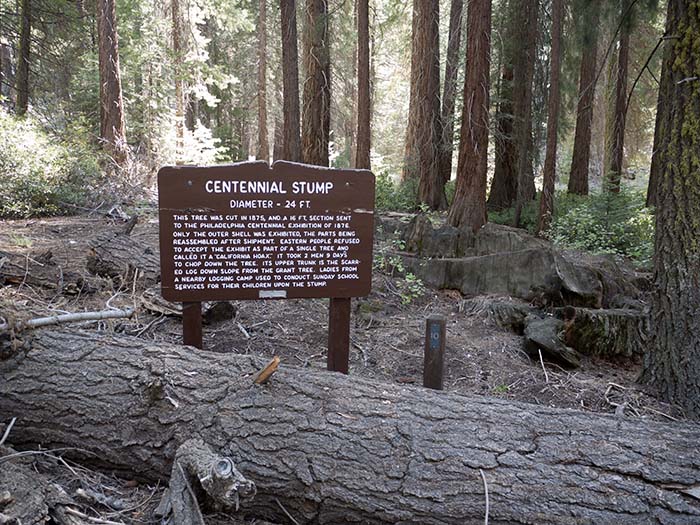
The centennial stump (behind the sign; diameter = 24 ft)
August 27, 2016: 9:18 AM |
|
This tree was cut in 1875, and in 1876 a 16-foot section was sent to the Centennial International Exhibition in Philadelphia. Only the outer shell was exhibited, the parts having been reassembled after shipment. Eastern visitors refused to accept the exhibit as a part of a single tree and called it a "California hoax." It took 2 men 9 days to chop down the tree. Its upper trunk is the scarred log down the slope from the Grant Tree. Ladies from a nearby logging camp used to conduct Sunday school services for their children upon the stump.
The park description |
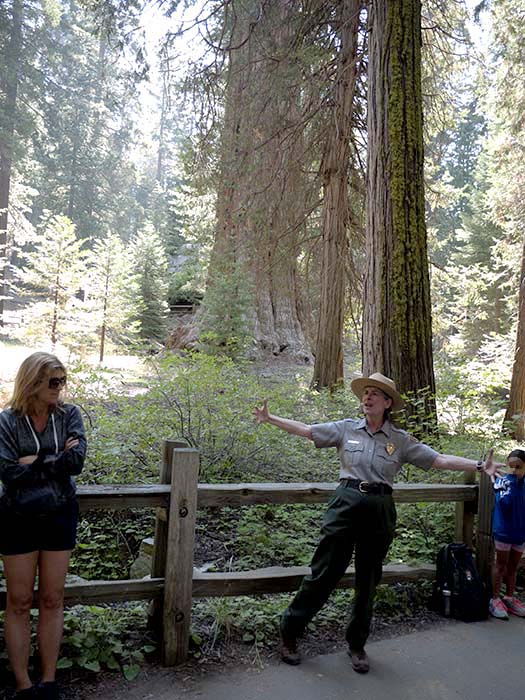
The ranger explains the history of the Park
August 27, 2016: 9:25 AM |
|
The area which now comprises Sequoia National Park was first home to Monachee (or Western Mono) Native Americans, who resided mainly in the Kaweah River drainage in the Foothills region of the park, though evidence of seasonal habitation exists even as high as the Giant Forest.
Wikipedia |
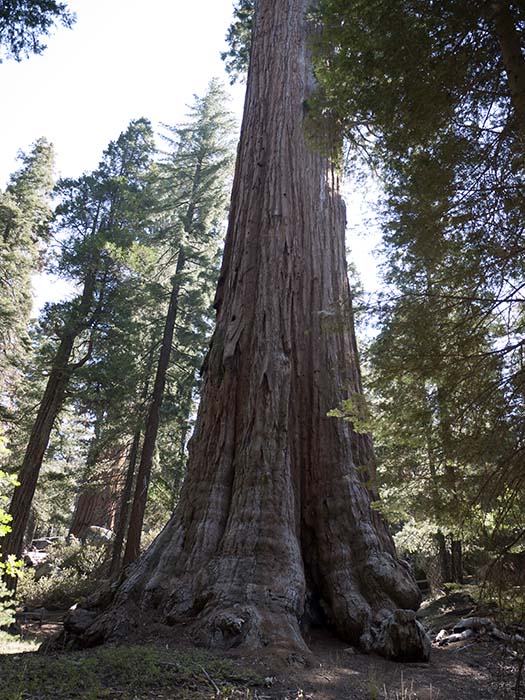
The General Grant Tree (Sequoiadendron giganteum)
August 27, 2016: 9:31 AM |
|
The General Grant Tree's massive trunk makes it the second-largest tree in the world, by volume. And at 40 feet (12 m) in diameter at ground level, it is the world's widest-known sequoia. But it is not nearly the oldest. In fact, it is 1,500 years younger than the oldest-known sequoia.
Location, not age, is the key to a sequoia's size. In places with the best combination of moisture, sunlight, and nutrients, they outgrow older sequoias rooted in less prime locations. Apparently conditions here are ideal, considering how quickly the General Grant Tree has grown so large. Volume = 46,608 cubic ft (1,320 cubic m) Circumference (at the base) = 108 ft (33 m) Height = 267 ft (82 m) Age (estimated) = 1,650 years The world's largest tree is the General Sherman Tree in the Giant Forest (27 miles south). The park description; Wikipedia |

The tree community: the incense cedar (Calocedrus decurrens), the giant sequoia (Sequoiadendron giganteum), the white fir (Abies concolor), and the sugar pine (Pinus lambertiana).
August 27, 2016: 9:35 AM |
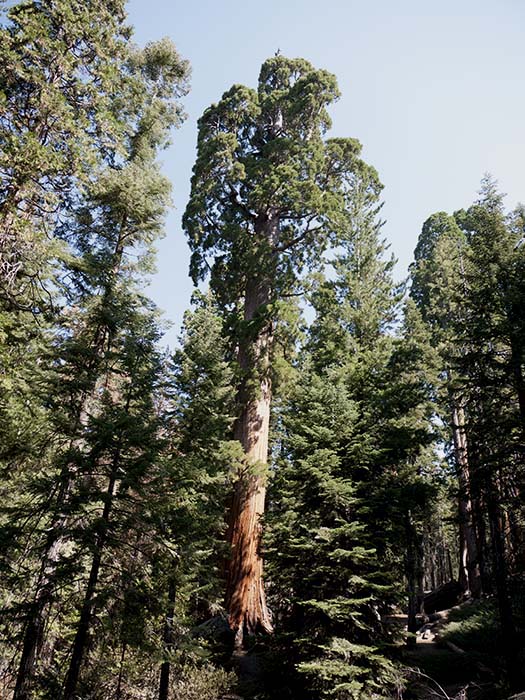
Giant sequoias
August 27, 2016: 9:38 AM |
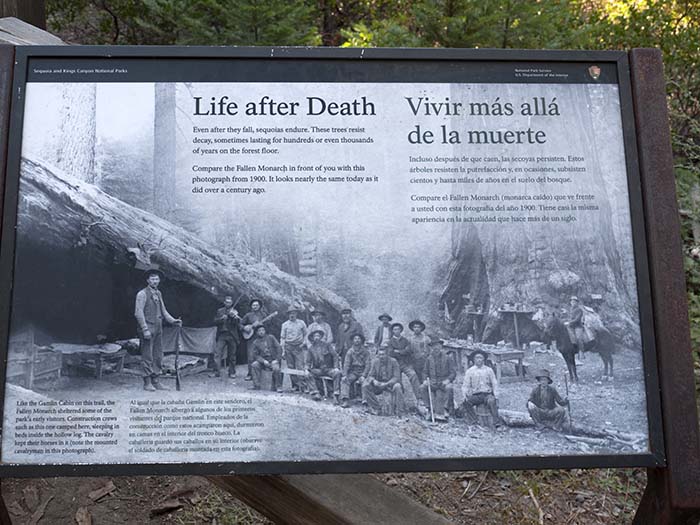
Life after death
August 27, 2016: 10:00 AM |
|
A construction crew (a digitally restored photograph for this webpage)
[click on the image] August 27, 2016: 10:00 AM |
|
Even after they fall, sequoias endure. These trees resist decay, sometimes lasting for hundreds or even thousands of years on the forest floor.
The Fallen Monarch looks nearly the same today as it did in 1900. It sheltered some of the park's early visitors. Construction crews such as this one camped here, sleeping in beds inside the hollow log. The cavalry kept their horses in it (note the mounted cavalryman in this photograph). The park description |
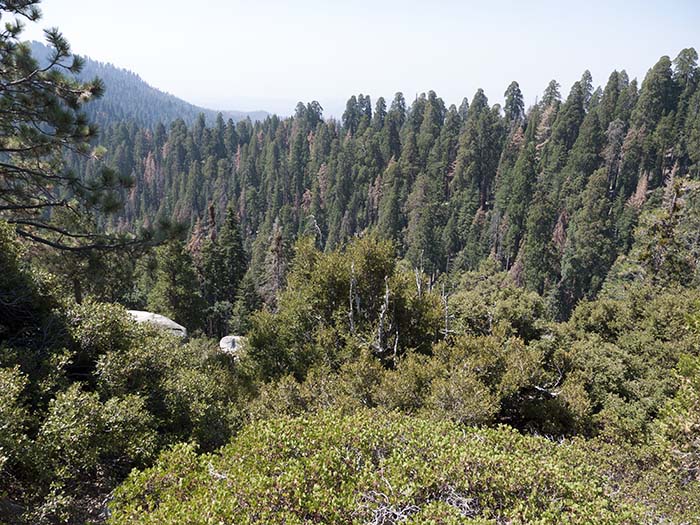
The views
August 27, 2016: 10:23 AM |
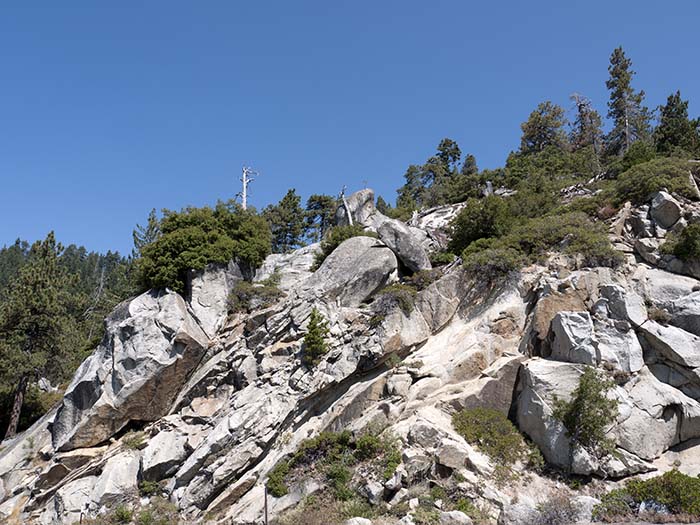
The views
August 27, 2016: 10:24 AM |
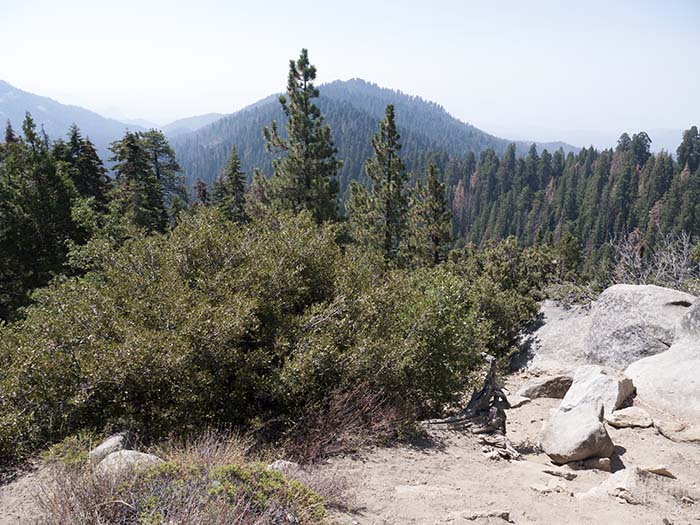
The views
August 27, 2016: 10:27 AM |
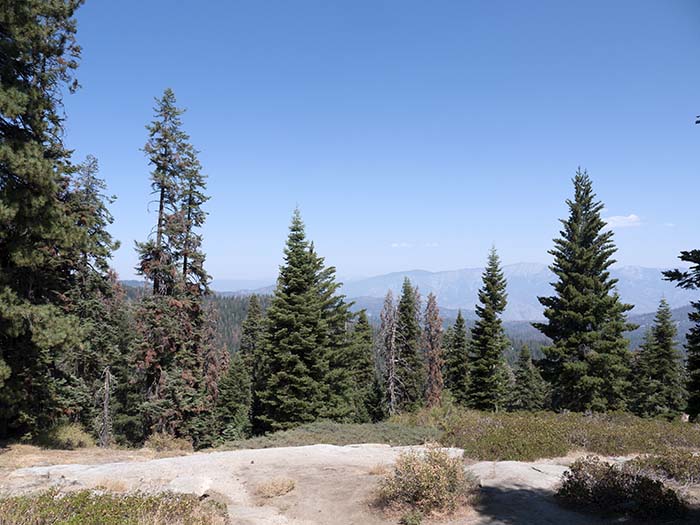
The views
August 27, 2016: 10:32 AM |
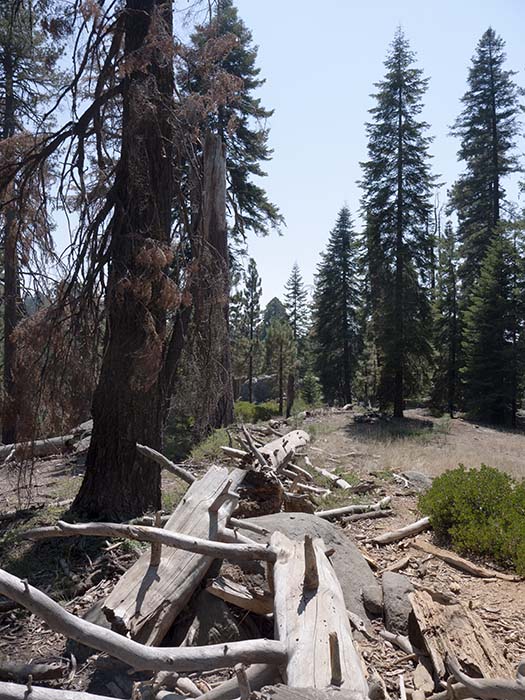
The beginning of the Sherman Tree trail (the General Sherman Tree is in the distance)
August 27, 2016: 12:45 PM |
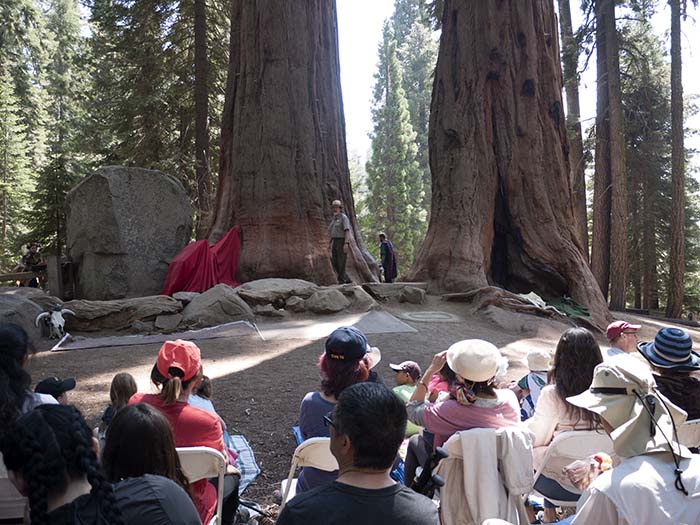
A performance at the park (Ersa of the Red Trees)
August 27, 2016: 1:00 PM |
|
The Sequoia Parks is proud to present, in collaboration with special National Park Service friends, a unique rendition of the classic Sequoia tale, Ersa of the Red Trees. We invite you back to 1926 to watch the Pageant Master of the National Parks, Garnet Holme, present his latest campaign to win hearts and souls of the public to the cause of environmentalism. This mysterious and magical pageant shall be presented by the Mountain, Forest, and Desert players, and it will be performed under the towering shadows of the world’s oldest, largest and most magnificent trees. It is a romantic and epic tale of love, heroism, loyalty, treachery, goodness and evil. The pageant will display fairies and beasts, magic and poetry, feats of derring do, and YOU. General Sherman will be seeking recruits for his battle to defend the Earth. Will you be chosen? Odds are good. Come be inspired and have fun.
The original announcement |

Ersa of the Red Trees
August 27, 2016: 1:12 PM |

Ersa of the Red Trees
August 27, 2016: 1:19 PM |
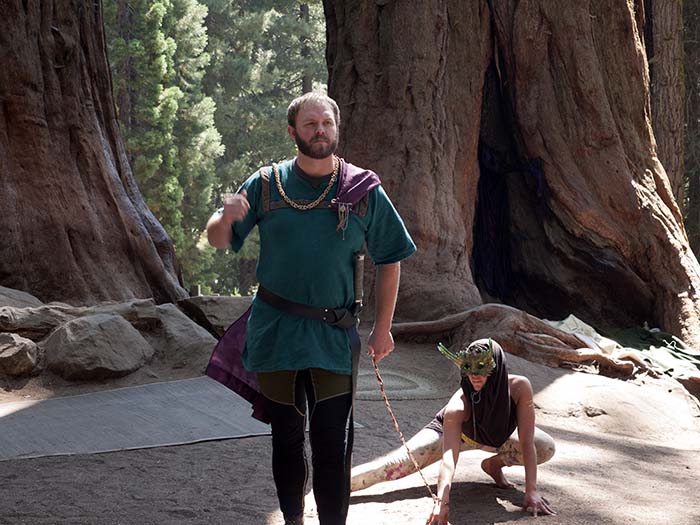
Ersa of the Red Trees
August 27, 2016: 1:20 PM |

Ersa of the Red Trees
August 27, 2016: 1:30 PM |
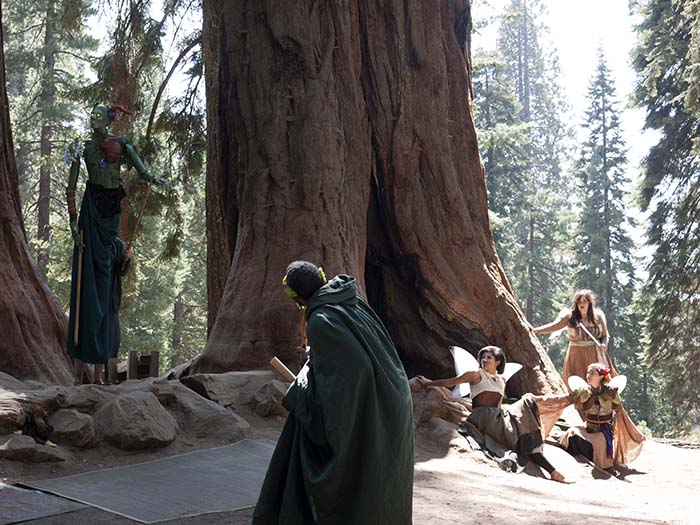
Ersa of the Red Trees
August 27, 2016: 1:33 PM |

Ersa of the Red Trees
August 27, 2016: 1:33 PM |
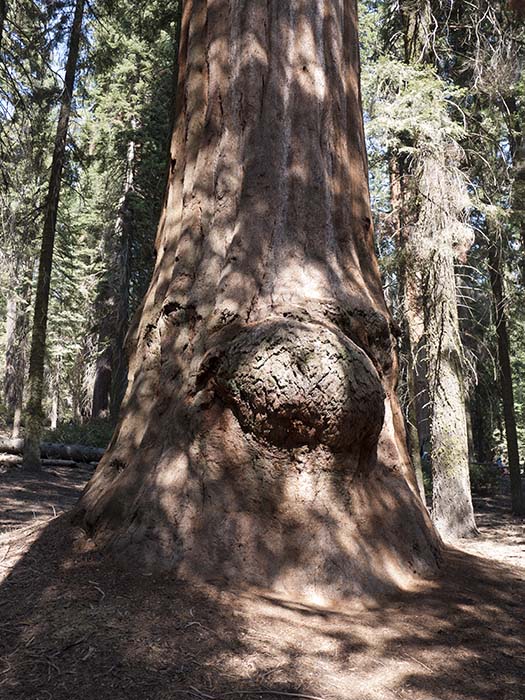
A tree trunk or a troll?
August 27, 2016: 2:07 PM |
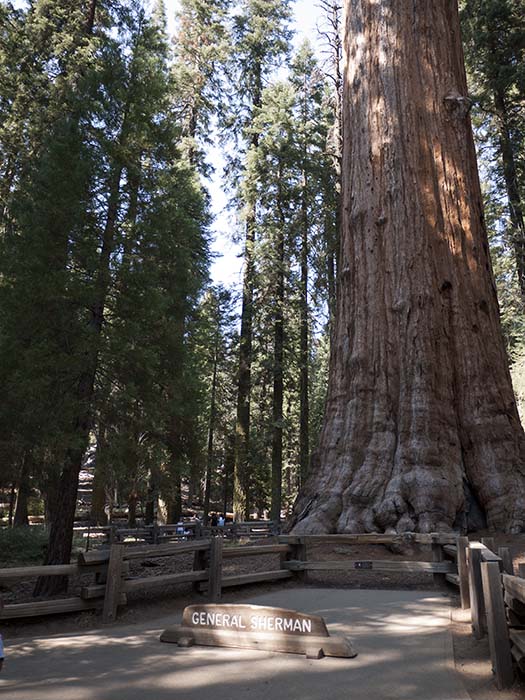
The General Sherman Tree
August 27, 2016: 2:11 PM |
|
Volume = 52,508 cubic ft (1,487 cubic m)
Circumference (at the base) = 103 ft (31 m) Height = 275 ft (84 m) Age (estimated) = 2,300-2,700 years Wikipedia |
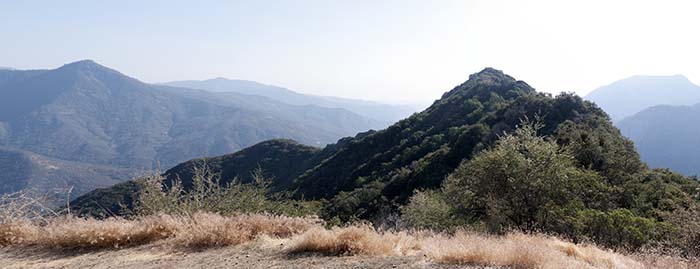
Leaving the Park
August 27, 2016: 3:52 PM |

Lake Kaweah
August 27, 2016: 4:52 PM |